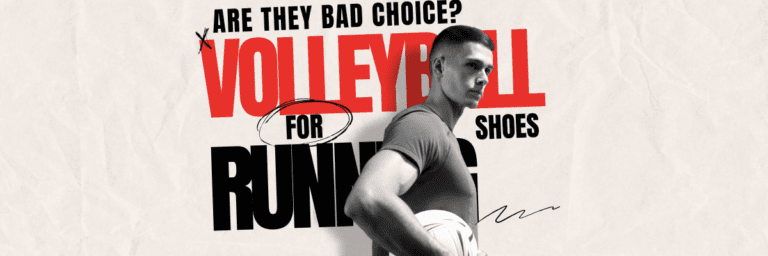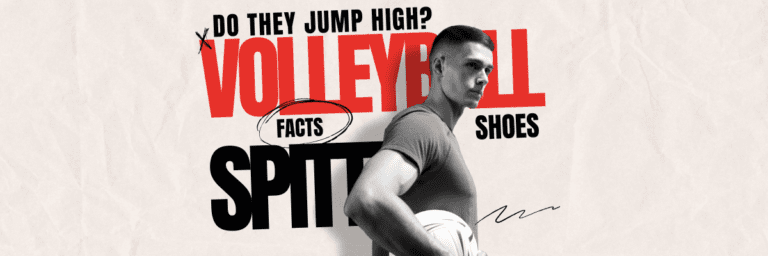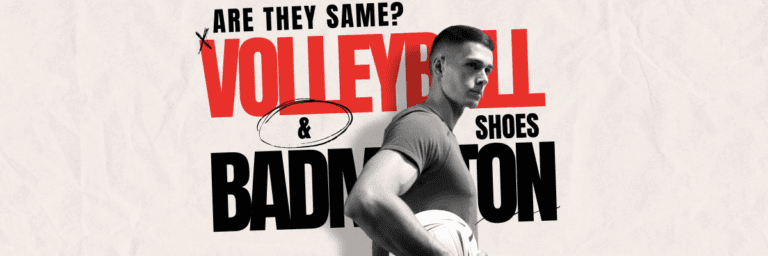Is There a Reason Why Some Beach Volleyball Players Don’t Wear Shoes?
A Quick Look at Beach Volleyball
Beach volleyball is an energetic sport played on sandy courts under the open sky. Teams of two battle it out, often opting to play without shoes, making every match a dance with the sand.
No Shoes? Here’s Why
Stepping onto the sand, players leave their shoes behind. It’s a choice ingrained in the sport’s culture. This footwear-free tradition helps distinguish beach volleyball from other sports.
Decoding the Barefoot Choice
What makes these athletes to forgo shoes? It’s a question of rules, the nature of sand, and what feels right for the players. From improving their game to protecting their soles, the reasons are as layered as the sport itself.
The Nature of Beach Volleyball

Description of Beach Volleyball as a Sport
Beach volleyball is more than a sport; it’s a celebration of sun, sand, and sweat. It’s volleyball stripped down to the essentials: a ball, a net, and an undaunted spirit, all set on a soft, sandy court that challenges even the most skilled players.
The Unique Demands of Playing on Sand
Playing on sand is a whole different ball game. Unlike the stable floors of indoor courts, the sandy terrain is unforgiving, constantly shifting underfoot. It demands balance, flexibility, and an ability to predict the unpredictable.
Gear and Attire: Beach vs. Indoor Volleyball
While indoor volleyball players rely on squeaky sneakers for grip, beach volleyball players often touch the sand with bare feet. The attire is different too; gone are the knee pads and long sleeves, replaced by shorts and tank tops fit for the beach setting.
Historical Perspective
The Roots of Beach Volleyball
Beach volleyball began on sunny coasts where simplicity was key. Players would show up in whatever they had on, often just swimwear, and start the game. No specific shoes, no uniforms, just the ball and the beach.
Gear Evolution in the Sport
Over time, as beach volleyball spiked in popularity, the equipment evolved. Athletes started to gear up with accessories designed for performance. Yet, many still chose to feel the sand under their feet, favoring the barefoot tradition that had always been part of the game’s charm.
Cultural Connection to Barefoot Play
Around the globe, playing without shoes has cultural roots. In beach volleyball, it reflects the sport’s informal heritage and connection to nature. It’s a practice that honors the game’s history and the simplicity of playing by the sea.
Rules and Regulations
FIVB’s Take on Footwear
The International Volleyball Federation (FIVB) sets the rules for beach volleyball, including what players wear on their feet. They allow players to go barefoot or wear socks and shoes, giving players the freedom to choose.
Influencing Athlete Choices
These rules, or the lack thereof, shape how players dress for the game. Many players choose to keep their feet free, touching the natural feel and traditions of the sport.
Beach Volleyball vs. Other Beach Sports
Unlike some beach sports that require footwear for safety, beach volleyball’s guidelines are relaxed. This gives beach volleyball its unique barefoot style, different from sports with stricter shoe policies.
Benefits of Playing Barefoot
Sensory Feedback: The Game at Your Toes
When volleyball players ditch their shoes, they gain a heightened sense of touch. The soles of their feet can feel every grain of sand, each shift, and the slope of the terrain. This isn’t just pleasant; it’s strategic. The feet become fine-tuned instruments, sending signals to the brain to help with balance, speed, and precision. It’s like having a conversation with the beach, where every step tells a story.
Balance and Agility: Dancing with the Sand
Shoes might seem like the best bet for sports, but on the beach, they can sink and slip, turning quick movements into clumsy shuffles. Bare feet, on the other hand, can pivot, push, and leap with ease. They morph into natural paddles, giving players the agility of a crab scuttling across the shoreline. It’s about working with the sand, not against it, allowing for a ballet of digs, spikes, and serves.
Cooling and Connection: Keeping it Chill
Picture this: It’s a hot day, and the sun is baking the sand to a sizzle. Shoes might turn into mini ovens, but bare feet? They get to breathe. They touch the coolness of the sand beneath the surface. This isn’t just about comfort; it’s about performance. Cooler feet mean a cooler head, and a cooler head makes for sharper decisions. There’s also a bond that forms when skin meets sand, a sort of partnership that says, ‘We’re in this game together.’
Challenges of the Sand Court
The Sand’s Shifting Story
The texture of the beach volleyball court is a fickle friend. The sand can be fine and inviting one moment, then heavy and trapping the next. Players must adapt to its mood swings, which can change with the weather, the time of day, or the amount of play the court has seen.
And let’s not forget the temperature – on scorching days, that sand can feel like a bed of hot coals, challenging even the toughest soles.
Beach Hazards: More Than Just Sandcastles
While the beach is a place of fun, it’s not without its dangers – especially for those playing at a competitive pace without shoes. Hidden in the seemingly pristine sand can be sharp shells, hidden glass, or rough debris, each posing a risk to the unwary player. These unexpected guests on the court can lead to cuts, scrapes, or worse, turning a game into a painful pit stop.
Sand and Performance: A Tricky Dance
Sand is not just a surface; it’s an opponent that never tires. It can sap the strength from legs, challenge the stability of a well-planned stance, and turn a powerful jump into a half-hearted hop.
Players must constantly adjust their technique to counter the sand’s drag and give their all to maintain the same level of performance that would be easier to achieve on a more forgiving surface. It’s a dance that demands endurance, creativity, and an acceptance of the beach’s ever-changing rhythm.
Footwear Alternatives: Sand Socks and Shoes
| Footwear Type | Features | Pros | Cons |
| Barefoot | None | Maximum agility, natural feel, cooling effect | Risk of injury, less protection |
| Sand Socks | Neoprene fabric, grip patterns | Balance between protection and sensitivity | Less durable than shoes |
| Shoes | Structured soles and ankle support | Maximum protection and support | Can trap heat and may impede natural foot movement |
Sand Socks: The Middle Ground
Meet sand socks, the sweet spot between barefoot freedom and shoe support. These snug coverings are designed to guard against the heat and hazards while still letting players feel the sand.
They’re like a secret weapon for the feet, offering a layer of protection without sacrificing the barefoot vibe that many beach volleyball players love.
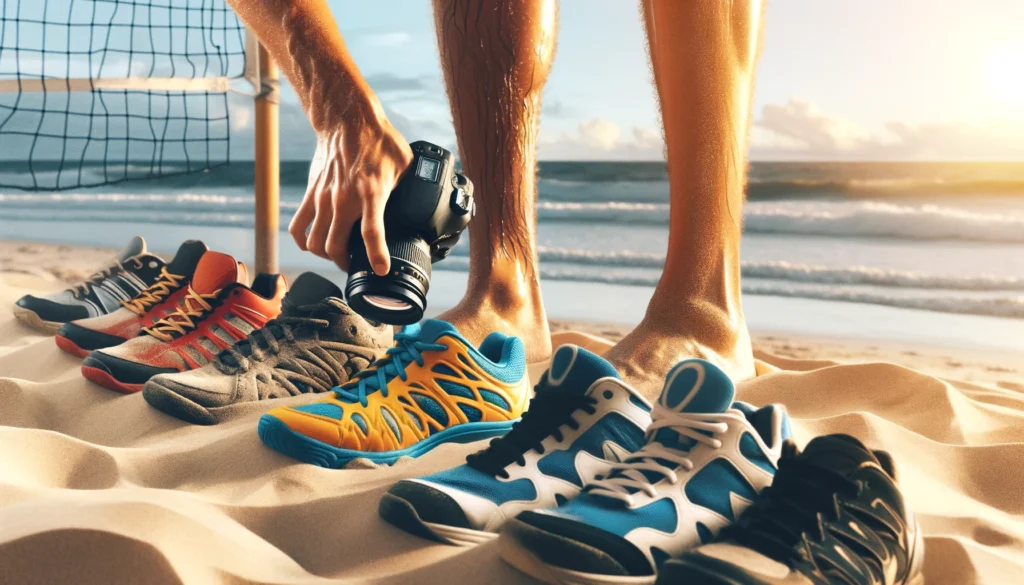
Choosing Shoes: Not Just Any Sneaker Will Do
For those who prefer a bit more cushion and protection, there’s a range of shoes crafted just for the sand. These aren’t your typical sneakers; they’re engineered to deal with the beach’s demands, offering a stable platform without bogging down the player in the soft terrain.
Some players swear by them, claiming they provide the support and security needed to play their best game.
The Footwear Face-off: Socks vs. Shoes
So, socks or shoes? It’s a debate as old as the sport itself. Sand socks offer a lightweight shield, keeping the sand’s burn at bay while staying close to a natural feel. Shoes, though, bring stability and a safeguard against sharper surprises on the court. But with shoes come the risks of overheating and less tactile feedback.
It’s a trade-off, and the choice often comes down to personal preference and playing style. Each option has its champions, and perhaps the best pick is the one that feels right underfoot.
Player Comfort and Performance
It’s a Personal Thing: Footwear Preferences
When it comes to beach volleyball, the best footwear might just be what feels best for the player. Some love the lightness of being barefoot; others go for the snug fit of sand socks; and then there are those who can’t do without the support of shoes. It’s all about personal comfort, which can vary as much as playing styles do.
Comfort’s Role in the Game
If a player is comfortable, they’re more likely to play better. It’s that simple. Uncomfortable gear can be a distraction, and in a game of quick moves and quicker decisions, distractions are as welcome as a seagull swooping in for your lunch. Comfortable feet can mean a more focused mind, and a focused mind can make the difference between a good play and a game-winning one.
Pros Talk Toes: What The Experts Say
Ask any beach volleyball player about their choice of footwear, and you’ll get a story as unique as their serve. Some pros will tell you about that one time they tried shoes and felt like they were running in quicksand.
Others might share how sand socks saved their soles during a midday match under the blazing sun. Each player’s choice is a mix of personal history, performance strategy, and a touch of beach volleyball philosophy.
Injury Prevention and Protection
Common Foot Injuries on the Sand Court
Playing beach volleyball isn’t always a walk on the beach, especially for the feet. Sprains, cuts, and blisters are the unwelcome guests of the game. The sand can hide sharp objects, and its uneven surface is a recipe for twisted ankles. Then there’s the sun, turning the sand into a hot griddle that can cook up some serious burns.
| Common Injuries | Barefoot | Sand Socks | Shoes |
| Cuts and Scrapes | Low protection | Medium protection | High protection |
| Sprains | Medium protection | High protection with ankle support | High protection with ankle support |
| Burns from Hot Sand | Low protection | High protection | Medium protection |
Barefoot or Booted: Safety First
Going without shoes is natural for many players, but it’s not without risks. That’s where sand socks come into play, offering a thin layer of protection. And for those who prefer a fortress for their feet, specially designed shoes can shield against the rough and tumble of the game. Both choices have their merits, keeping injuries at bay so the players can focus on their next serve, not their next bandage.

The Doctor’s Orders: Health Pros Weigh In
Sports health experts have plenty to say when it comes to feet and beach volleyball. They’ll point out that the right gear can be a game-changer in preventing injuries.
Whether it’s the snug hug of sand socks or the structured support of shoes, protecting your feet means you’re likely to spend more time on the court and less time on the sidelines. These pros emphasize that listening to your body and choosing the right footwear can be just as crucial as any other training regimen.
The Impact of Weather and Environment
Climate Calls the Shots
The choice of footwear in beach volleyball often depends on the weather’s mood. On cooler days, players might prefer the extra warmth of sand socks or shoes. But when the mercury rises, bare feet can be a blessing, keeping players cool and swift on the scorching sand.
| Weather Condition | Preferred Footwear | Reason |
| Hot and Sunny | Barefoot/Sand Socks | Avoid overheating, better heat dissipation |
| Cool and Cloudy | Shoes/Sand Socks | Extra warmth, protection from elements |
| Wet and Rainy | Waterproof Shoes | Prevent slippage, protect from dampness |
Adapting to Mother Nature’s Playground
Beach volleyball players are like chameleons; they adapt to their environment. Wet sand from a recent rain, a gusty day, or the blistering heat of a midsummer game, all these conditions can influence whether a player goes barefoot or opts for some form of footwear to help them stay competitive.
Beating Extreme Weather
When the weather turns extreme, players turn strategic with their footwear. On steaming hot sands, you might see them sprinkling water on their feet or wearing light-colored socks to reflect the sun. In windy conditions, some might choose shoes to keep the sand from whipping against their skin. It’s all about finding ways to stay comfortable so the game can go on.
Psychological and Tactical Aspects
Mind Over Sand: The Comfort Factor
The feel of sand between the toes can be as soothing as it is invigorating, offering a sense of freedom and connection to the earth that many players find psychologically comforting. Conversely, the secure feeling of wearing protective gear can boost confidence, letting players dive for the ball without a second thought about foot injuries.
Tactical Footwork: Choosing the Right Armor
In the chess game of beach volleyball, footwear can be a player’s knight or bishop. Bare feet allow for subtle shifts and quick sprints, while shoes can provide a firm foundation for powerful moves.
Sand socks strike a balance, giving some protection without sacrificing too much sensitivity. Each option can be a tactical choice, depending on the player’s style and the game’s demands.
The Belief in Gear: Performance Placebo
Sometimes, just believing in the gear can enhance a player’s game. The confidence that comes from wearing a particular brand of sand socks or the latest model of beach volleyball shoes might offer no actual physical advantage, but if it boosts a player’s morale, that can be a beast.
This placebo effect, where the belief in the effectiveness of the gear improves performance, is well documented, and in a sport where mental strength is as important as physical prowess, every little bit counts.
Technological Advances in Volleyball Footwear
| Technology | Description | Benefits |
| Moisture-wicking materials | Fabric that expels sweat | Keeps feet dry and comfortable |
| Temperature-responsive soles | Soles that adjust to temperature changes | Comfort in various climates |
| Movement-tracking sensors | Sensors that monitor foot movement | Data for performance improvement |
The New Wave of Beach Gear
The latest volleyball shoes and sand socks aren’t just about fashion; they’re packed with features. Think breathable fabrics that keep feet cool, and soles designed to grip the sand like a starfish. It’s about blending science and the surf to keep players at the top of their game.
Tech on the Court: A Game Changer
Technology is shaking up beach volleyball. Shoes with moisture-wicking materials and sand socks that offer UV protection are just the start.
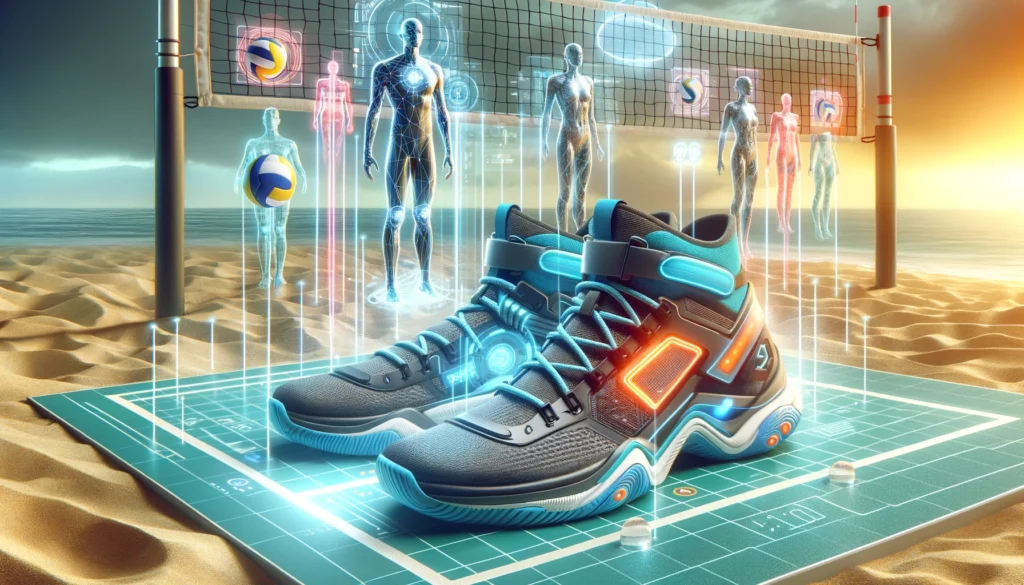
It’s all about giving players that extra edge, whether it’s through improved traction for explosive jumps or padding that cushions landings.
Stepping Into the Future
What’s next for beach volleyball footwear? Picture shoes that adjust to the temperature or socks with sensors to track movement. The possibilities are exciting and endless, promising a future where technology supports every serve and sprint.
Conclusion
Summary of Key Points Discussed
We’ve talked about the sandy courts of beach volleyball, exploring the reasons why players might choose to forgo traditional shoes. From the sensory benefits of playing barefoot to the protective touch of sand socks and shoes, each option serves a purpose and meets unique demands of the sport.
The Significance of Footwear Choices
Understanding these choices isn’t just about footwear; it’s a deeper insight into the sport’s culture and the players’ approaches to the game. It’s about how they interact with their environment and the strategies they deploy to play at their best.
Tradition, Comfort, and Performance
As beach volleyball continues to evolve, so too does the balance between tradition and innovation. The choice of going barefoot, sticking to tradition, or opting for technologically advanced footwear to enhance performance reflects the sport’s dynamic nature. The constant is the athletes’ quest for comfort and their unyielding commitment to excel in the game they love, whether they’re leaving footprints in the sand or impressions on the scoreboard.

![Is There A Reason Why Some Beach Volleyball Players Don'T Wear Shoes? 1 Some Beach Volleyball Players Don't Wear Shoes! [Reason]](https://bestvolleyballshoes.co/wp-content/uploads/2023/11/Some-Beach-Volleyball-Players-Dont-Wear-Shoes-Reason.png)
